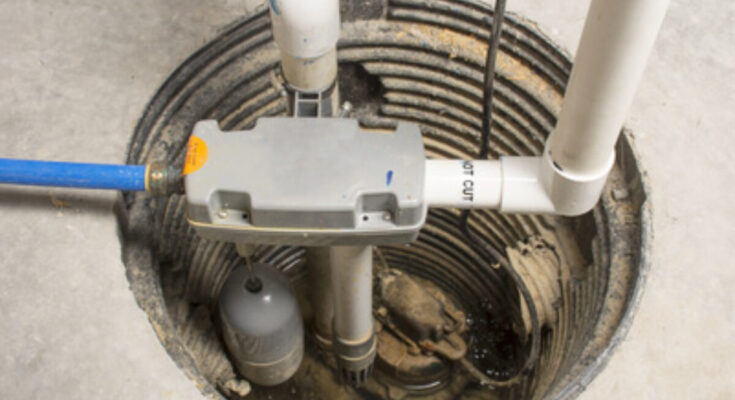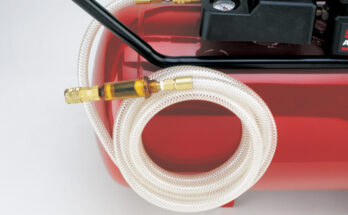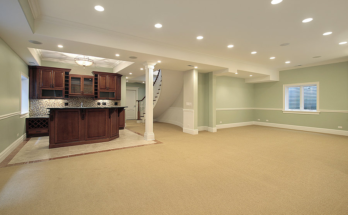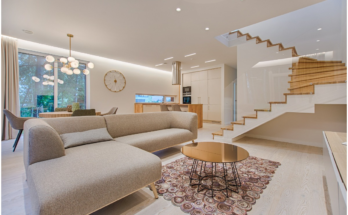There’s a common misconception that sump pump in finished basement are immune to water damage. Many homeowners believe that once their basement is renovated and furnished, they no longer need to worry about issues like flooding or moisture. However, this couldn’t be further from the truth. In fact, sump pump in finished basement are often more susceptible to water damage due to the increased value of the space and the investment in furnishings and decor. That’s where sump pumps come into play.
Understanding Sump Pump In Finished Basement
Imagine this scenario: You’ve spent months transforming your basement into the ultimate entertainment space, complete with a cozy home theater and a stylish wet bar. But one day, after a heavy rainfall, you discover water seeping in through the walls, threatening to ruin your investment. This is where a sump pump in finished basement becomes your knight in shining armor.
So, what exactly is a sump pump in finished basement? Essentially, it’s a device installed in the lowest part of a basement or crawlspace designed to pump out excess water and prevent flooding. Think of it as your basement’s first line of defense against water intrusion.
Types of Sump Pumps and Their Features
When it comes to choosing a sump pump for your sump pump in finished basement, you have a few options to consider. The two main types are submersible pumps and pedestal pumps.
Submersible pumps are installed directly inside the sump pit and are designed to operate underwater. They tend to be quieter and more discreet, making them ideal for finished basements where aesthetics are a priority.
Pedestal pumps, on the other hand, are installed above the sump pit with the motor sitting on a pedestal above the water level. While they may not be as visually appealing as submersible pumps, they’re often more affordable and easier to maintain.
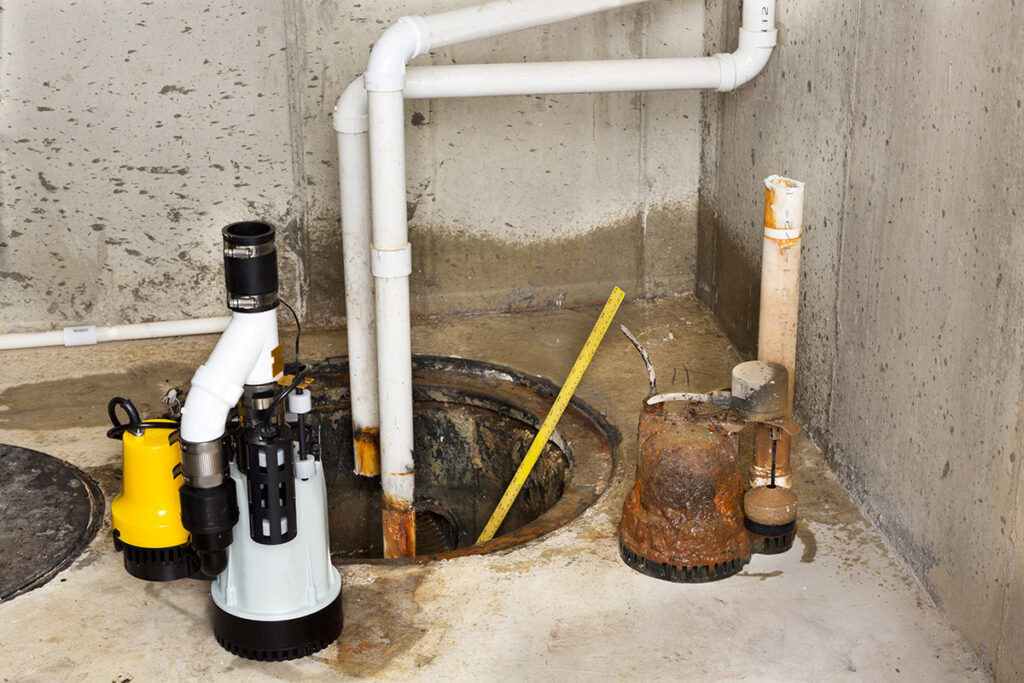
Photo by: everdrytoledo.com
Installation and Maintenance Tips
Installing a sump pump in finished basement may seem daunting, but with the right guidance, it can be a straightforward process. Here are some tips to help you get started:
Locate the lowest point:
Identify the lowest part of your basement where water tends to collect and install the sump pump there.
Dig the sump pit:
Dig a hole deep enough to accommodate the sump pump in finished basement and line it with gravel for proper drainage.
Install the pump:
Place the sump pump in finished basement inside the pit, ensuring that it’s level and securely positioned.
Connect the discharge pipe
Attach a discharge pipe to the pump and route it away from your home to prevent water from pooling near the foundation.
Test the pump:
Once installed, test the pump to ensure it’s working correctly and adjust the float switch as needed.
As for maintenance, regular upkeep is key to ensuring your sump pump remains in top condition. Here are some maintenance tips to keep in mind:
Check the pump regularly:
Inspect your sump pump periodically to ensure it’s free of debris and functioning properly.
Test the pump:
Test your sump pump at least once a year by pouring water into the sump pit and making sure the pump activates.
Replace the battery:
If your sump pump has a battery backup system, make sure to replace the battery every two to three years to ensure reliable operation during power outages.
Keep the discharge pipe clear:
Regularly check the discharge pipe to make sure it’s free of obstructions and directing water away from your home.
By following these installation and maintenance tips, you can ensure your sump pump is ready to protect your finished basement from water damage year-round.
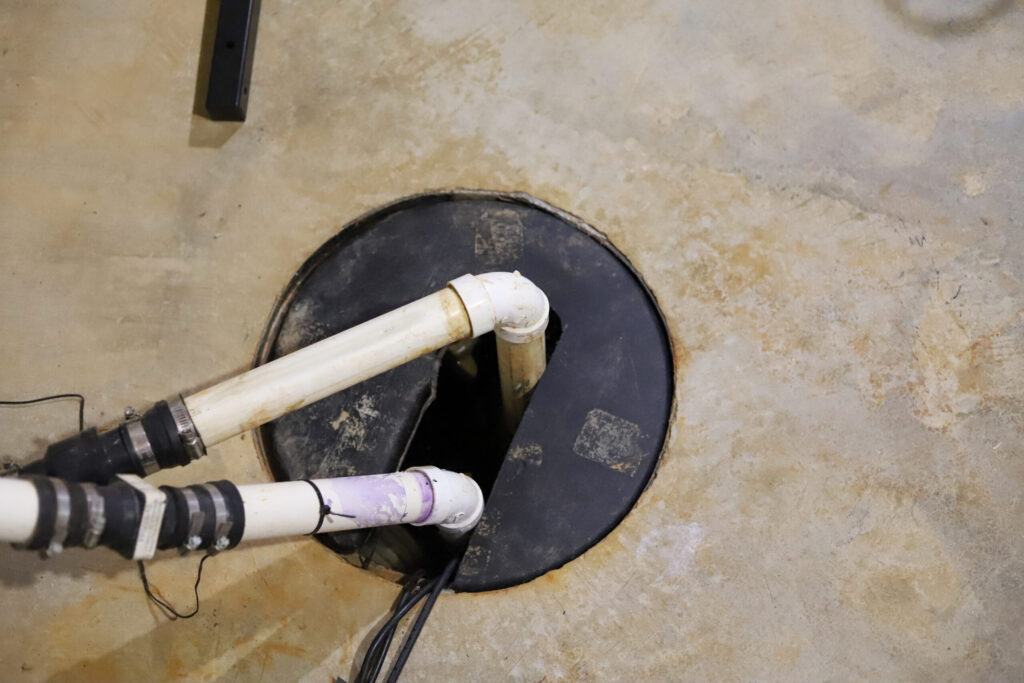
Photo by: heartlandheatingandair.com
Debunking Misconceptions About Sump Pump Types and Features
Despite the critical role sump pumps play in protecting finished basements, there’s often confusion surrounding the different types and features available. Let’s clear up these misconceptions and explore the various options to help you make an informed decision for your home.
Types of Sump Pumps: Submersible vs. Pedestal
One common misconception is that all sump pumps are created equal. In reality, there are two main types: submersible pumps and pedestal pumps. Understanding the differences between these two options is crucial when selecting the right sump pump for your finished basement.
Submersible Pumps: Quiet and Efficient
Submersible pumps are designed to be placed directly inside the sump pit and operate underwater. One of the key advantages of submersible pumps is their quiet operation. Since the motor is submerged in water, these pumps tend to produce less noise compared to pedestal pumps, making them ideal for finished basements where noise levels can be a concern.
Additionally, submersible pumps are more discreet in appearance, as they are hidden from view within the sump pit. This can be advantageous in a finished basement where aesthetics are important. Despite their quieter operation and sleek design, submersible pumps are often more expensive than pedestal pumps and may require more extensive installation.
Pedestal Pumps: Affordable and Accessible
On the other hand, pedestal pumps are installed above the sump pit, with the motor sitting on a pedestal above the water level. While they may not be as visually appealing as submersible pumps, pedestal pumps have their own set of benefits.
One of the main advantages of pedestal pumps is their affordability. These pumps tend to be less expensive than their submersible counterparts, making them a budget-friendly option for homeowners. Additionally, pedestal pumps are easier to access for maintenance and repairs since the motor is located above ground level.
Choosing the Right Sump Pump for Your Finished Basement
When it comes to selecting the right sump pump for your finished basement, there are a few factors to consider:
Basement Size and Layout:
Take into account the size and layout of your basement when choosing between a submersible or pedestal pump. Submersible pumps are better suited for larger basements with higher water volumes, while pedestal pumps may be sufficient for smaller spaces.
Noise Considerations:
If noise is a concern, opt for a submersible pump for its quieter operation. However, if noise levels are less of a priority, a pedestal pump may be a more cost-effective option.
Budget:
Consider your budget when making your decision. While submersible pumps may be more expensive upfront, they may offer long-term savings in terms of energy efficiency and durability.
Installation and Maintenance:
Think about ease of installation and maintenance. Pedestal pumps are easier to access for repairs, but submersible pumps may require less frequent maintenance due to their submerged design.
Debunking Myths About Sump Pump Installation and Maintenance
One prevalent myth surrounding sump pumps in finished basements is that once installed, they require minimal maintenance and attention. This misconception often leads homeowners to neglect proper installation and upkeep, putting their basement at risk of water damage. Let’s dispel this myth and delve into the essential steps for installing and maintaining a sump pump in finished basement to safeguard your finished basement effectively.
Installation Tips for a Reliable Sump Pump System
Installing a sump pump in finished basement may seem like a daunting task, but with the right guidance, it can be a manageable DIY project for homeowners. Here are some essential tips to ensure a successful installation:
Locate the Lowest Point:
Begin by identifying the lowest point in your basement where water tends to collect. This is where you’ll install your sump pump in finished basement to effectively drain excess water away from your home’s foundation.
Dig the Sump Pit:
Once you’ve identified the location, dig a pit deep enough to accommodate the sump pump. The pit should be large enough to allow proper drainage and prevent water from overflowing.
Install the Pump:
Place the sump pump inside the pit, ensuring that it sits level and securely in place. Connect the pump to a power source and test it to ensure it’s functioning correctly.
Connect the Discharge Pipe:
Attach a discharge pipe to the pump and route it away from your home’s foundation to prevent water from seeping back into the basement.
Test the System:
Once the installation is complete, test the sump pump in finished basement by pouring water into the pit and observing its operation. Ensure that the pump activates automatically and effectively drains the water away from the basement.
By following these installation tips, you can set up a reliable sump pump system to protect your sump pump in finished basement from water damage effectively.
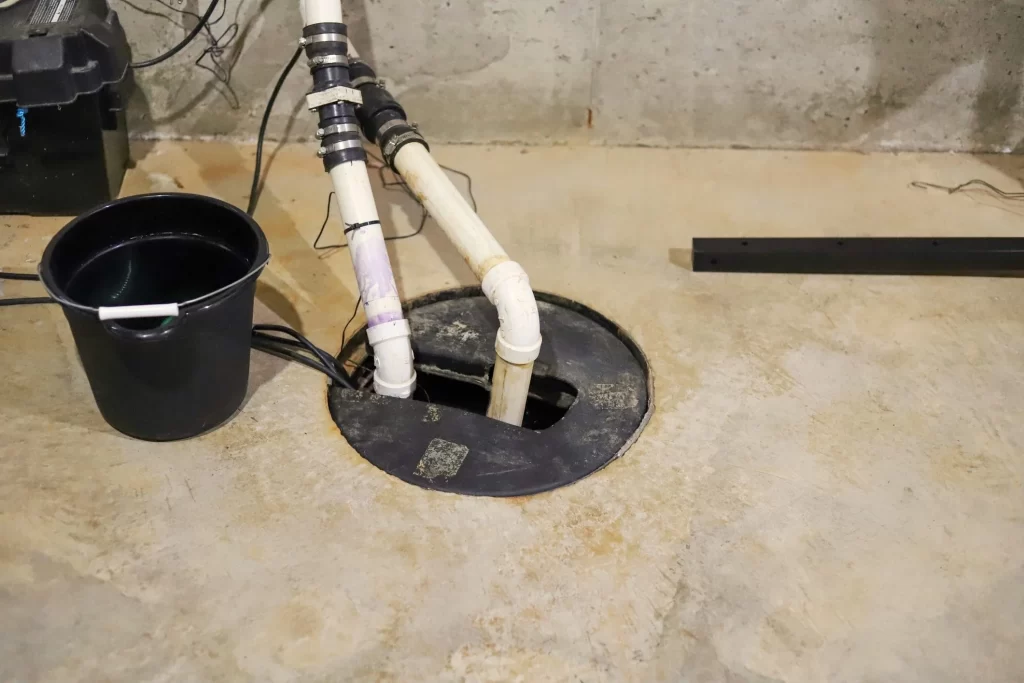
Photo by: familyhandyman.com
Maintenance Guidelines for Long-Term Performance
Proper maintenance is crucial to ensuring your sump pump operates smoothly and effectively year-round. Here are some essential maintenance guidelines to keep in mind:
Regular Inspection:
Periodically inspect your sump pump in finished basement to ensure it’s free of debris and functioning correctly. Check for any signs of wear or damage that may affect its performance.
Test the Pump:
Test your sump pump in finished basement at least once a year by pouring water into the pit and verifying that the pump activates as expected. This will help identify any issues early on and prevent potential flooding.
Clean the Pit:
Clean out the sump pit regularly to remove any dirt, debris, or sediment that may accumulate over time. This will help prevent clogs and ensure proper drainage.
Check the Discharge Pipe:
Inspect the discharge pipe to ensure it’s clear of obstructions and directing water away from your home’s foundation. Clear any blockages or debris that may hinder the flow of water.
Replace Backup Batteries:
If your sump pump has a battery backup system, make sure to replace the batteries as needed to ensure reliable operation during power outages.
By following these maintenance guidelines, you can prolong the life of your sump pump in finished basement and ensure it remains ready to protect your sump pump in finished basement from water damage at all times.
Understanding the Sump Pump in Finished Basement
When it comes to safeguarding your sump pump in finished basement from water damage, a sump pump plays a pivotal role. This device is typically installed in the lowest point of the basement, known as the sump pit, where it automatically pumps out excess water that accumulates due to rainwater infiltration or rising groundwater levels. The presence of a sump pump provides homeowners with peace of mind, knowing that their investment in a finished basement is protected against potential flooding and moisture issues.
Pros and Cons of Sump Pump Installation
Installing a sump pump in finished basement offers several benefits, but it’s essential to weigh these advantages against potential drawbacks to make an informed decision.
Pros:
- Effective Water Removal: A sump pump efficiently removes excess water from the basement, preventing damage to furnishings, flooring, and walls.
- Automatic Operation: Most sump pumps are equipped with float switches that activate the pump automatically when water levels rise, ensuring timely drainage without the need for manual intervention.
- Protection Against Mold and Mildew: By keeping the basement dry, a sump pump helps prevent the growth of mold and mildew, which can thrive in damp environments and pose health risks to occupants.
Cons:
- Reliance on Power Supply: Sump pumps rely on electricity to operate, which means they may be rendered ineffective during power outages unless equipped with a battery backup system.
- Maintenance Requirements: Sump pumps require regular maintenance to ensure proper functioning, including cleaning the sump pit, testing the pump, and replacing backup batteries as needed.
- Installation Challenges: Installing a sump pump can be a complex process, especially in finished basements where access may be limited and aesthetics are a concern.
The Verdict: Is a Sump Pump Worth It for Your Finished Basement?
Despite the potential drawbacks, the benefits of installing a sump pump in finished basement far outweigh the challenges. When properly installed and maintained, a sump pump provides reliable protection against water damage, preserving the integrity and value of your investment. By understanding the features, pros, and cons of sump pump installation, you can make an informed decision to safeguard your finished basement effectively. In our next section, we’ll delve into essential maintenance tips to ensure your sump pump operates smoothly for years to come. Stay tuned for expert insights!
Frequently Asked Questions About Sump Pump In Finished Basement Waterproofing
Q: Do I really need a sump pump if my basement is finished? A: Absolutely! Even though your basement may be finished, it’s still susceptible to water damage from flooding or moisture buildup. A sump pump provides essential protection against these issues, helping to keep your basement dry and free from damage.
Q: What’s the difference between a submersible and pedestal sump pump? A: The main difference is how they’re installed. Submersible pumps are placed directly in the sump pit and operate underwater, while pedestal pumps are mounted above the pit with the motor on a pedestal. Submersible pumps are quieter and more discreet, while pedestal pumps are typically more affordable and easier to access for maintenance.
Q: How often should I test my sump pump? A: It’s a good idea to test your sump pump at least once a year, preferably before the rainy season begins. Simply pour water into the sump pit to trigger the pump and ensure it’s working properly. Additionally, it’s essential to check your pump during heavy rainfall to confirm it can handle the volume of water.
Q: What maintenance tasks are required for sump pumps? A: Regular maintenance is key to ensuring your sump pump operates effectively. This includes cleaning the sump pit, testing the pump, inspecting the discharge pipe for blockages, and replacing backup batteries as needed. By staying on top of these tasks, you can ensure your sump pump is ready to protect your basement when it matters most.
Q: Can I install a sump pump myself, or do I need professional help? A: While some homeowners may feel comfortable installing a sump pump themselves, it’s essential to consider factors like basement layout, electrical wiring, and local building codes. If you’re unsure or if your basement is particularly complex, it’s best to consult with a professional contractor who can ensure the sump pump is installed correctly and meets all safety requirements.
Q: Are there any alternatives to sump pumps for basement waterproofing? A: While sump pumps are highly effective, there are other waterproofing strategies you can implement to complement your sump pump system. These include sealing basement walls, installing drainage systems, and using dehumidifiers to control moisture levels. It’s often beneficial to combine multiple waterproofing methods for comprehensive protection against water damage.
Q: What should I do if my sump pump fails during a storm? A: If your sump pump fails during a storm, it’s essential to act quickly to minimize water damage to your basement. First, check if the pump is receiving power and if any circuit breakers have tripped. If the pump is still not working, consider using a backup pump if available or manually removing water with a wet vacuum. Additionally, contact a professional plumber or sump pump technician for assistance with repairs or replacement.
